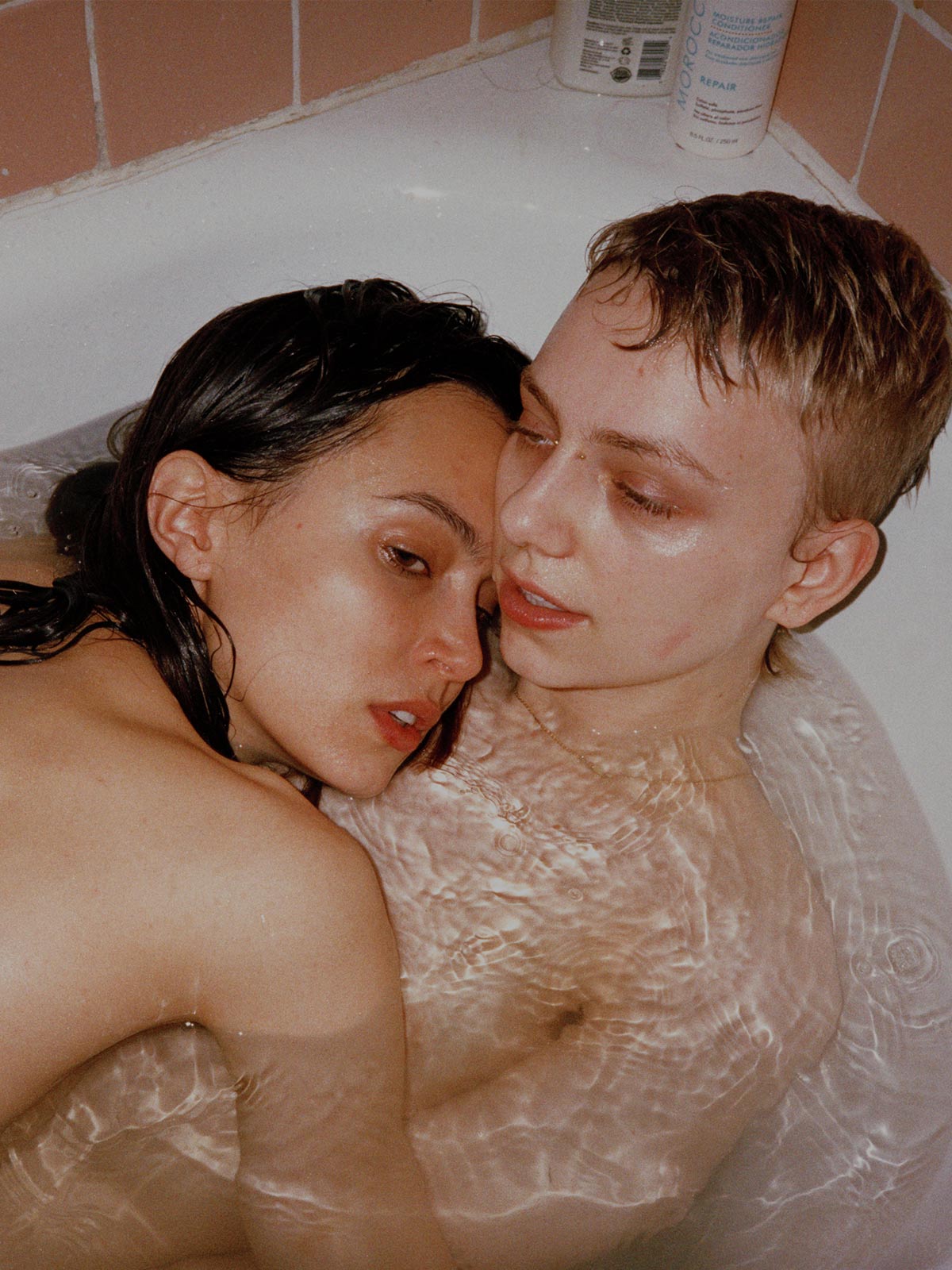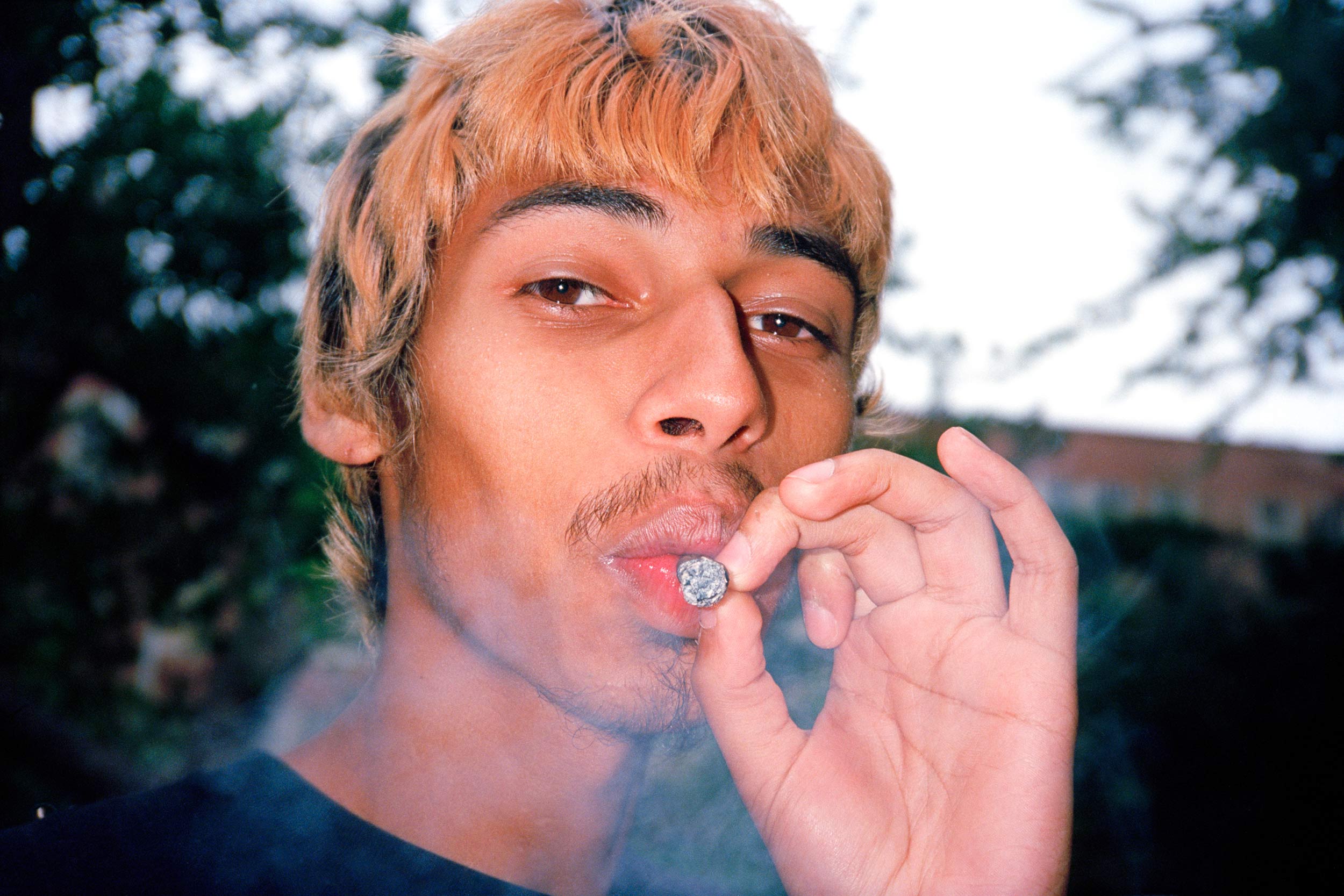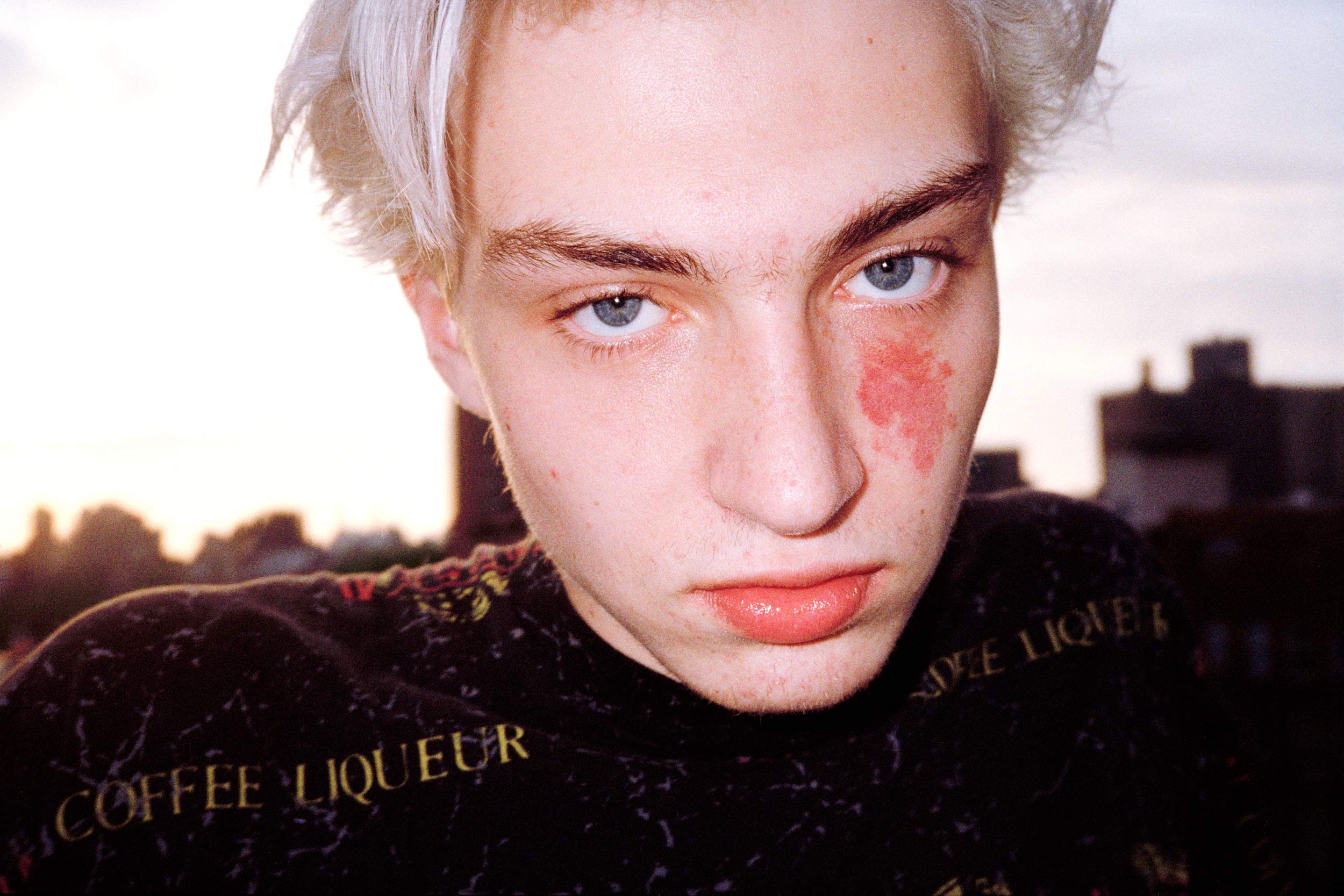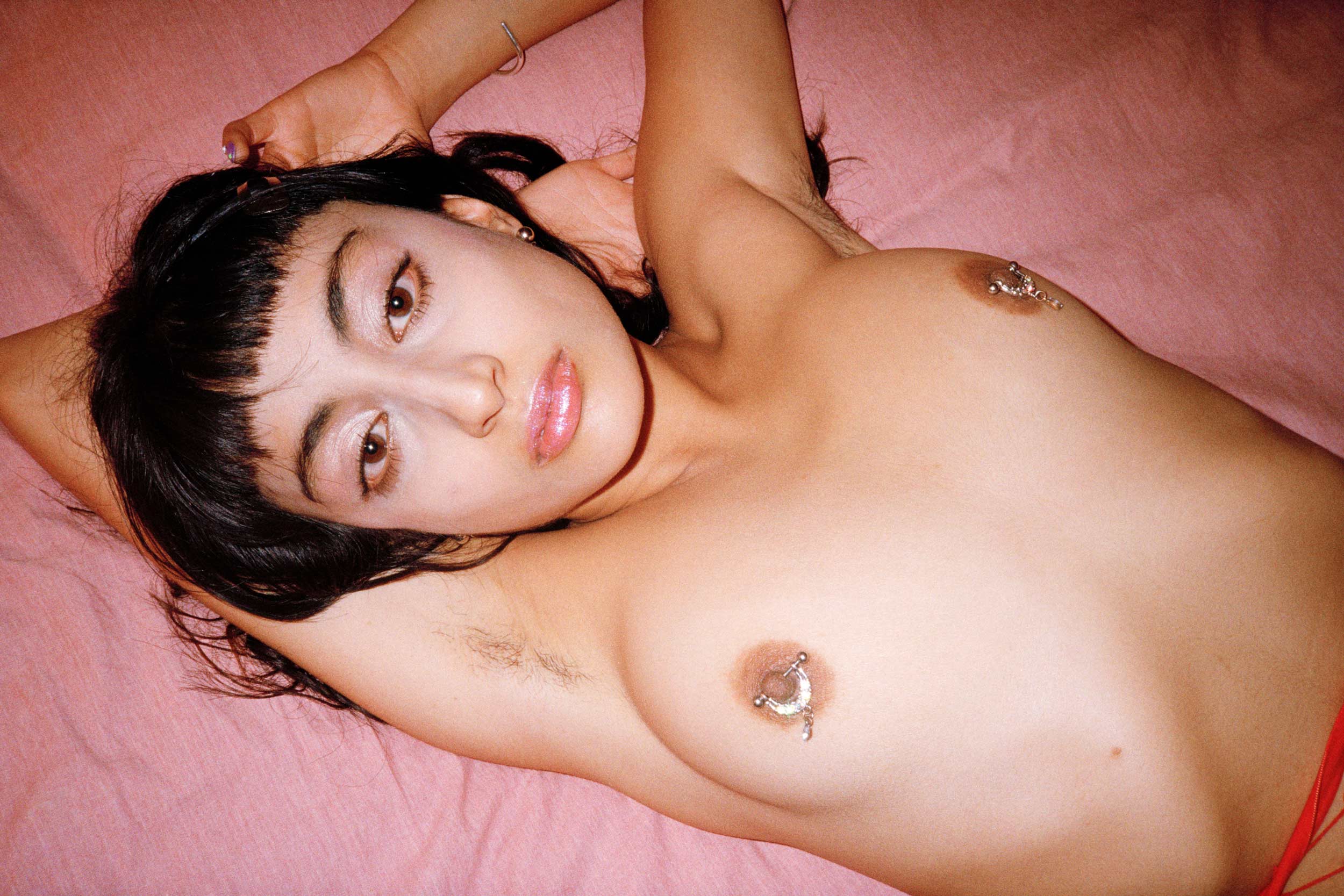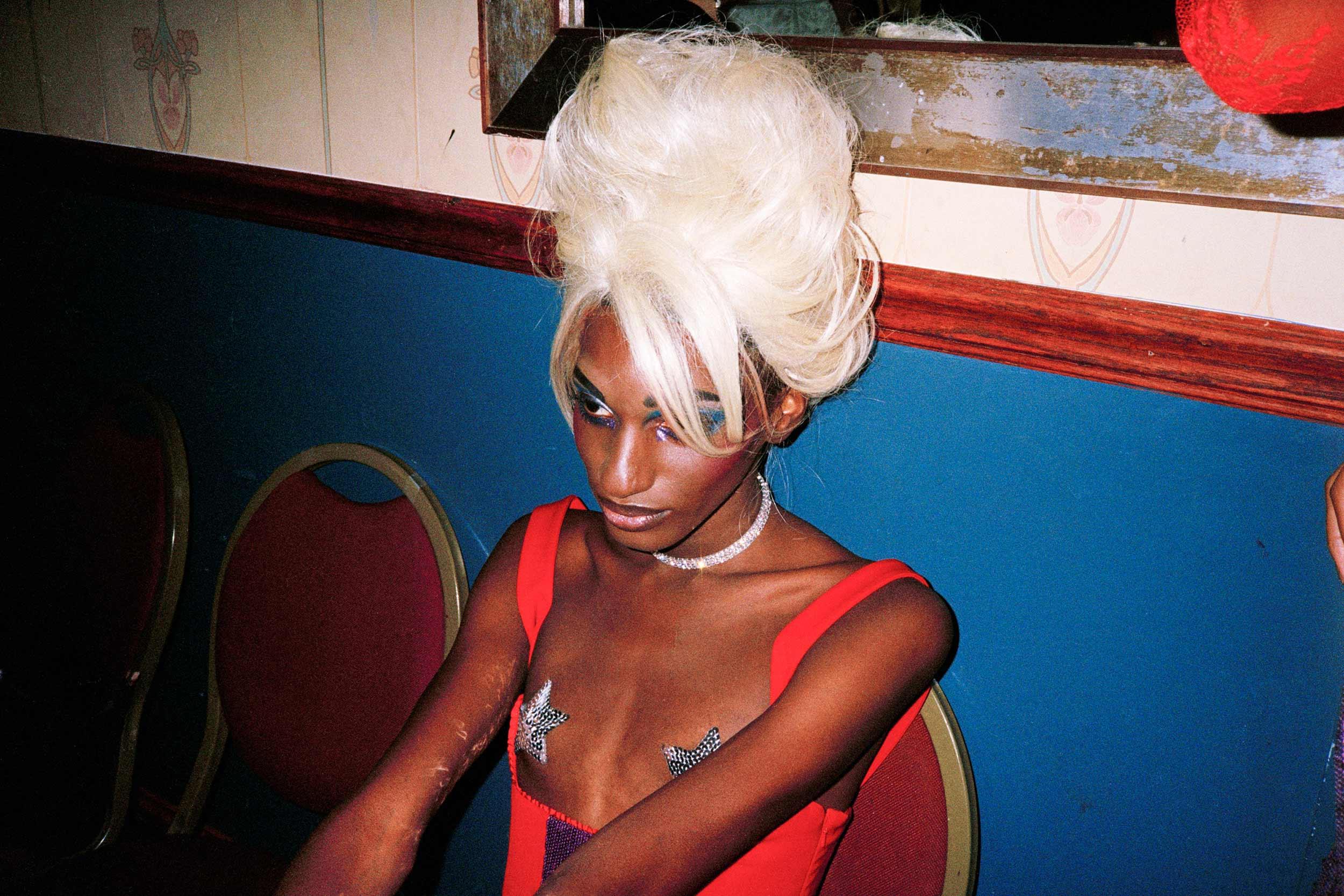The Czech-born, New York-based photographer immortalizes her American Youth series with her new book ‘Young American.’
If there’s anyone who can prove the American dream is still alive, it’s Marie Tomanova. Tomanova decamped from the Czech Republic as a defeated painter with aspirations to live life in the America she saw in films like Pretty Woman and Dirty Dancing. Those visions of Julia Roberts shopping on Rodeo Drive and Jennifer Grey dancing with Patrick Swayze were a far cry from reality when she quit her bartending job and landed in North Carolina to become an au pair. But it was there that she discovered Ryan McGinley’s photographs of carefree 20-somethings on the internet and she decided that where he lived was where she should be. It wasn’t McGinley who inspired her to become a photographer, however, it was the late Francesca Woodman, whose whimsical self-portraits Tomanova saw in a Guggenheim exhibition in 2012. Tomanova enrolled in evening classes at the School of Visual Arts, and encouraged by her instructors, she pursued the medium for fun. As luck would have it, a series of events would lead Tomanova to meet McGinley, who convinced her to make a book. That book, Young American, debuts this week. Intrigued by their freedom, Tomanova photographed an array of 20-somethings living in New York City, capturing their rebellious style, insouciant spirit—and their youth. I met with Tomanova, who recalled meeting McGinley, how she overcame shyness with photography, and why young people make the best subjects.
Ann Binlot—Tell me about your new book. Why did you decide to turn that body of work into a book?
Marie Tomanova—It was always a dream to have a book, and since this was my first solo show, it was kind of organic to turn it into a book. The show was on view at the Czech Center June 28th. It was up for two months. My hero has always been Ryan McGinley. I love his work. It’s also one of the reasons why I came to New York. My first year in the United States I spent in North Carolina as an au pair, and I saw Ryan’s pictures online, and I was like, Oh my god! Who is this? What’s that? And I realized he’s a photographer living in New York City, so I was like, Next year, I’m moving to New York. Since ever, I just wanted to be photographed by Ryan, and never did it even occur to me that I would be a photographer, because I wasn’t doing photography back then. I started after I came to New York and just got inspired by a show at the Guggenheim to take pictures.
Ann—Yeah, Francesca Woodman. I actually saw that show. What about it inspired you?
Marie—It really did inspire me. I think it was her journals. At that time I was writing a lot because that was the only kind of creative work I felt comfortable in. I’m actually originally a painter, and I studied painting, but my professor was a dick, and I didn’t feel comfortable in painting because he was always putting me down as an artist. It was really hard because if somebody is telling you you’re shit for three years, there’s no proof. You can’t always prove that he’s wrong, and I may be doing something good. I never painted since.
Ann—You should try it just to spite him.
Marie—Maybe, but then I came to New York and saw Francesca Woodman’s show, and I took classes at the School of Visual Arts, just evening classes, and it was so refreshing, they told me, That’s good. They were so supportive. I was like, Oh my god, somebody isn’t telling me I’m shit all the time.
Ann—What was the first camera you started using?
Marie—I just had a digital Canon, a used camera, it was shitty. I was shooting digital because I didn’t know anything about film cameras and I never tried it, and thank god because I was shooting digital and I was taking 2,000 pictures in two hours, so shooting film—I would not be able to pay for that. That’s a whole other world. [Laughing] It was great, I just kept photographing, and I was doing it for fun.
Ann—How did you meet Ryan?
Marie—I went to his show. Downtown New York is small, too, so people know each other, and my friend knew him, and my husband knew him a little bit….I’m actually really shy when I talk to somebody who I adore. I was like, now or never, so I came to him, and I told him I had a show and I asked him if he wanted to see it, and he said yes. He was sitting with me on the floor for two hours chatting and taking photos, and he was like, I know that person, and I know that person! We kept watching it, and he told me, ‘You should do a book,’ and I was like, ‘Okay, I’ll do a book.’ That was the biggest motivation—somebody who you admire tells you your work is great and that you should do a book.
Ann—Tell me about the series Young American. How many years were you taking photographs?
Marie—I started taking photographs with self-portraiture, which I’ve done for a while just because I didn’t have many friends that I feel comfortable photographing. I guess I’m very shy, it doesn’t look like that, but I was very shy as a child. I realized through photography I can actually meet a lot of people who will become friends. In 2015 or so, I started to take pictures of people in New York, and it kept evolving, and [art historian] Thomas [Beachdel] edited it into all these close-ups, which I shoot with a little Yashica T4, it’s a plastic point-and-shoot. You can get really close—if you’re holding a huge camera in somebody’s face, it can get really offensive. Most of these portraits are close-ups of faces that are focused mostly in the eyes. There’s a certain softness once you really connect with people and are able to get so close to their face.
Ann—You see it in your photographs, that there’s a connection between you and them. It looks like your subject trusts you.
Marie—It’s also based on the fact that I am a little shy, and if they’re shy, I need to first talk to the person. Most of the people I photograph, I met for the first time. It’s uncomfortable. I always love to chat and I love to hear people’s stories. All of these kids are amazing. New York is a crazy place to be and being here that young—so much freedom.
Ann—You recently returned to the Czech Republic to print your book. What was that like?
Marie—I was thinking, how you can still feel the communist times there. It’s still there. It’s in the people, not just the fashion. It’s the mood, it’s the attitude. I was really glad that I left, even though it sounds really harsh. I think it’s going to be an ongoing love-hate relationship with my country. It had been eight years since I last visited, and I was really hoping that I was going to go home to visit, and I just couldn’t wait. I think this whole Young American series came from the fact that I wanted to belong here in the youth culture.
Ann—What is the state of Young America at the moment?
Marie—There is way more anxiety and way more vulnerability.
Ann—Because they’re overexposed?
Marie—I think there is way more pressure on self-image and self-promotion. Around here, if you go to an opening or party, there’s always somebody taking a video, or streaming. You’re constantly being uploaded some place. When I was in Czech, my friends didn’t really hang out on their phones. It’s great to be in the moment and enjoy that. I think that’s going to be a struggle for this generation, but I think it will switch. I’m bored with social media. If I would not have to do it, my life would be so much better, also my work is not meant to be seen this tiny on phone screens. I want [it] printed big in the gallery space. In real life, experience is very important. I hope it comes back.
Ann—Where are you finding these subjects?
Marie—I used to go to parties with Nicky Ottav, this sweet kid who was and is still throwing parties. They had an amazing apartment in the Lower East Side, where everyone was getting ready before they go out. They were these young kids all dressed up, and really beautiful and fabulous, and ready to party. They party until 3 or 4. I don’t drink, I don’t smoke, I usually go to bed at 10:30 or 11, so this kind of nightlife is not doable. It’s probably one of the most exciting and very alive scenes.
Ann—What about on Mercer? I always feel like it’s a runway.
Marie—I shot a couple of kids there too. There are always cool kids sitting on Mercer. They’re super young. Some of them are art school kids. I live in the East Village, my favorite spots are there. Tompkins Square Park in the summer, St. Marks…there are always cool people in the evening, and Instagram, and the subway, but I’m always shy.
Ann—Speaking of being shy, you took that one photo of the two women in the bathtub. Did you know them already?
Marie—Kate and Odie! No, that was the first shoot that we’ve done. I talked about this with Ryan. Kate is a Czech girl, and I just hit her up on Instagram and told her I would love to take photos of her. They had a kitty, Sphinx, and she was really cute. We met up, there was lots of energy, and all the photos I have from that shoot are great. Ryan was like, ‘That was your first shoot? And you got to get them nude in the bathtub? How did you do that?’ Good energy, nice connection, and Kate and Odie not being shy. It just all worked out. It was the beginning of their relationship. That was 2016 and they’re still together.
Ann—Wow! What’s next for you?
Marie—I have a solo show in the Czech Republic in April, which is my first show there, and then after that I have a big solo show in Berlin. I’ve never been there.
Ann—You’re going to love it!


